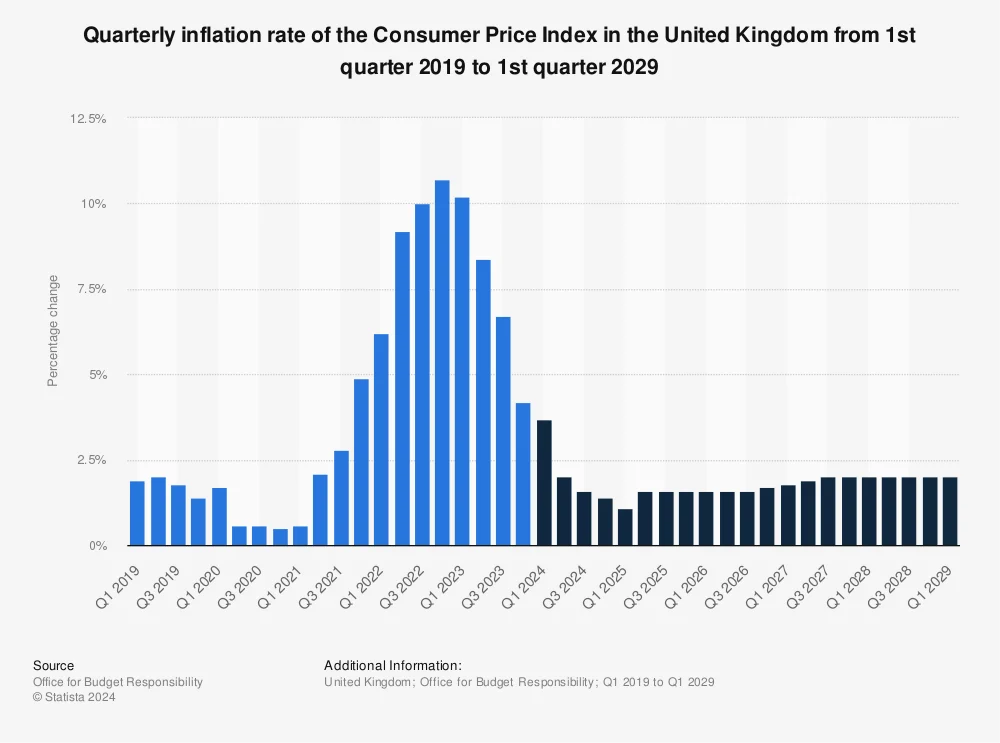The Consumer Price Index (CPI) is a widely used measure of inflation that tracks the average change over time in the prices paid by urban consumers for a market basket of consumer goods and services. CPI is an important economic indicator, as it provides insight into the cost of living and helps in making policy decisions related to monetary and fiscal measures. The Bureau of Labor Statistics calculates CPI on a monthly basis, and it is used by government agencies, businesses, and individuals to make informed decisions about their financial planning and investment strategies.
One alternative term related to CPI is “inflation rate,” which measures the percentage change in the CPI over a specific period and reflects the increase in the cost of living. Another concept associated with CPI is “purchasing power,” which refers to the amount of goods and services that can be purchased with a specific amount of money, and CPI is a key factor in determining changes in purchasing power. Additionally, “basket of goods” is a term used to describe the collection of goods and services whose prices are tracked by the CPI, representing the typical spending patterns of consumers. “Core inflation” is another important concept, which excludes volatile items like food and energy from the CPI calculation to provide a more stable measure of inflation. Finally, “deflation” is the opposite of inflation, representing a decrease in the general price level of goods and services, as measured by a negative change in the CPI.
What is CPI?
CPI stands for Consumer Price Index, which is a measure used to estimate the average change in prices paid by consumers for a basket of goods and services over time. It is an important economic indicator that helps to gauge inflation and the cost of living for the general population. CPI is calculated by gathering price data for a wide range of consumer goods and services, such as food, housing, transportation, and medical care, and then comparing this data to a base period.
The CPI is widely used by governments, businesses, and individuals to make economic decisions. Central banks, for example, use CPI to make monetary policy decisions, while businesses may use it to adjust prices and wages. Individuals can also use CPI to understand how inflation may be impacting their purchasing power and to make informed financial decisions.
How is CPI calculated?
To calculate CPI, a base period is chosen as a reference point, and the prices of a specified set of goods and services in that base period are assigned a value of 100. Then, in subsequent periods, the prices of the same set of goods and services are compared to the base period to determine the percentage change. These percentage changes are weighted based on the importance of each item in the average consumer’s budget, and then combined to calculate the overall CPI.
The formula for calculating CPI is: CPI = (Cost of Basket in Current Period / Cost of Basket in Base Period) x 100. This calculation provides a single number that represents the average price change for the entire basket of goods and services, allowing for easy comparison over time.
Types of CPI
There are several types of CPI that are calculated to reflect different aspects of consumer spending. Some of the most common types include the CPI for All Urban Consumers (CPI-U), which represents the spending habits of about 93% of the total population, and the CPI for Urban Wage Earners and Clerical Workers (CPI-W), which focuses specifically on the spending patterns of urban households that derive more than half of their income from clerical or wage occupations.
Other specialized CPIs include the Core CPI, which excludes volatile items like food and energy to provide a more stable measure of inflation, and the Chained CPI, which takes into account changes in consumer behavior in response to price fluctuations. Each type of CPI serves a specific purpose and provides valuable insights into different aspects of consumer spending and inflation.
Importance of CPI
The CPI is important for several reasons. First, it provides a measure of inflation, which is crucial for policymakers in making decisions about monetary policy, interest rates, and government spending. It also helps businesses and individuals make informed decisions about pricing, wages, and investments. Additionally, the CPI is used to adjust income and eligibility levels for various government programs, such as Social Security benefits and tax brackets.
Furthermore, the CPI is used as a benchmark for adjusting contracts, including leases, labor agreements, and alimony payments. Overall, CPI plays a critical role in the economy by providing a comprehensive measure of the cost of living and inflation, which has wide-reaching implications for various stakeholders.
Challenges of CPI
While CPI is a widely used and important economic indicator, it is not without its challenges. One of the main challenges is the concept of substitution bias, which arises from the fixed basket of goods and services used to calculate CPI. As prices change, consumers may adjust their spending habits and substitute cheaper alternatives, which may not be fully captured in the CPI calculation.
Additionally, CPI may not fully account for changes in quality or the introduction of new products, which can impact the accuracy of the index. There are also debates about which items should be included in the CPI basket and how their weights should be determined. These challenges have led to ongoing discussions about potential improvements to the CPI calculation methodology.
Impact of CPI on Investments
CPI has a direct impact on investments, as it provides insights into the rate of inflation and purchasing power. Investors often use CPI data to adjust their investment strategies, particularly in relation to fixed-income securities. When inflation is high, the real return on fixed-income investments decreases, leading investors to seek out inflation-protected securities or other assets that can provide a hedge against inflation.
Furthermore, CPI data can influence the decisions of central banks and policymakers, which in turn can impact financial markets and investment trends. By staying informed about CPI trends and projections, investors can make more informed decisions about asset allocation, risk management, and long-term financial planning.
CPI vs. PCE
Another important measure of inflation is the Personal Consumption Expenditures (PCE) price index, which is often compared to CPI. While both indices measure price changes for goods and services, there are some key differences in their methodologies and coverage. One notable difference is that PCE accounts for changes in consumer behavior and the introduction of new products more effectively than CPI, which may lead to slightly different inflation estimates.
Additionally, the Federal Reserve prefers to use the PCE index as its primary measure of inflation, as it is believed to capture changes in consumer spending patterns more accurately. However, both CPI and PCE provide valuable insights into inflation trends and are widely used by economists, policymakers, and investors to understand the dynamics of price changes in the economy.
International CPI Comparisons
Comparing CPI data across different countries can provide valuable insights into global economic trends and purchasing power disparities. By examining the CPI of various countries, economists and policymakers can assess relative price levels, inflation rates, and currency valuations, which can inform decisions about trade, investment, and international economic cooperation.
International CPI comparisons can also shed light on differences in consumer preferences, market structures, and government policies that influence price levels. This information can be useful for multinational corporations and investors seeking to understand and navigate diverse economic environments. Overall, international CPI comparisons contribute to a broader understanding of the interconnectedness of global economies and the implications for international trade and finance.
| Term | Description |
|---|---|
| CPI | Consumer Price Index, a measure that examines the weighted average of prices of a basket of consumer goods and services, such as transportation, food and medical care. |
CONCLUSION
CPI, tüketici fiyatlarını ölçen ve tüketici sepetindeki çeşitli ürünlerin ağırlıklı ortalamasını inceleyen bir ölçümdür. Ulaşım, gıda ve tıbbi bakım gibi tüketici mallarının fiyatlarını içerir.



